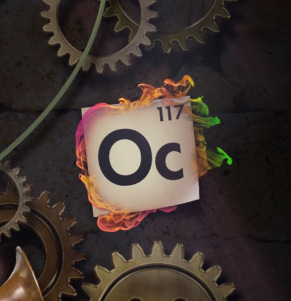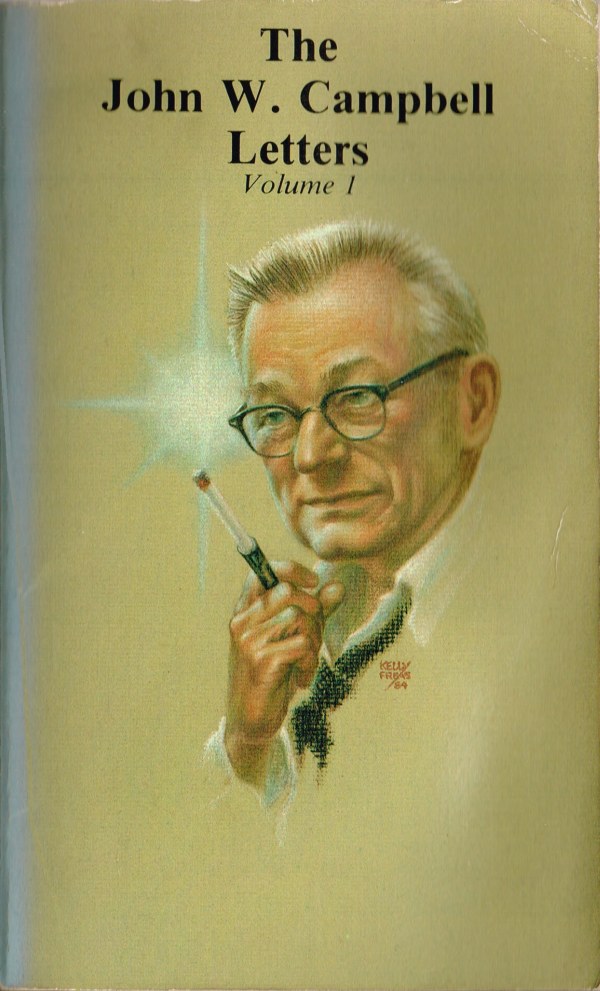(1) VISIT A BRADBURY HOME. The house Ray Bradbury lived in when he was 11 years old will be included in Tucson’s Armory Park home tour, which will be happening November 12.
From the outside, Dolores and Jerry Cannon’s house looks like an antique dollhouse with a white picket fence — not the kind of place one would think the author of such celebrated books as “Farenheit 451” or the “Martian Chronicles” once lived.
But it is — Ray Bradbury called the Armory Park home in 1931, when he was just 11. You can imagine where he might have gotten some of his early inspiration on the Nov. 12th Armory Park Home Tour which will include 15 homes.
The Bradbury family lived in Tucson, Arizona at two different times during his boyhood while his father pursued employment, each time returning to Waukegan.
(2) NO ENVELOPE, PLEASE. Adrian Tchaikovsky’s guest post for SFFWorld, “Mad Science and Modern Warfare”, describes the tech in his MilSF novel Ironclads.
Ironclads is set in the near future. There’s a lot in the geopolitics and social elements of the book that is a direct, albeit very negative extrapolation from the way things are now. The technology, though, goes to some odd places, and I was conscious of not just pushing the envelope but ripping through it a few times. I like my science fiction, after all, and some of what Ted Regan and his squad face up against has more fiction than science to it.
“Designed for deep insertion.”
Most of Ted’s own kit, and that of his squadmates Sturgeon and Franken, is not much different to a modern military payload, but then the chief lesson Ted’s learnt about the army is that they get yesterday’s gear compared to the corporate soldiers. Hence their vehicle, the abysmally named ‘Trojan’, is not so far off a modern armoured car – resilient and rugged but, as the Englishman, Lawes, says, “what soldiers get into just before they get ****ed”. Most of the rest of their kit is drawn direct from cutting edge current tech. Their robotic pack-mule is a six-legged version of the “Big Dog” robots currently being developed, and the translation software in Ted’s helmet isn’t much beyond what advanced phone apps these days are being designed to do.
(3) BREAKTHROUGH ARCHEOLOGY. “Unearthing a masterpiece” explains how a University of Cincinnati team’s discovery of a rare Minoan sealstone in the treasure-laden tomb of a Bronze Age Greek warrior promises to rewrite the history of ancient Greek art.
[Jack Davis, the University of Cincinnati’s Carl W. Blegen professor of Greek archaeology and department head] and Stocker say the Pylos Combat Agate’s craftsmanship and exquisite detail make it the finest discovered work of glyptic art produced in the Aegean Bronze Age.
“What is fascinating is that the representation of the human body is at a level of detail and musculature that one doesn’t find again until the classical period of Greek art 1,000 years later,” explained Davis. “It’s a spectacular find.”
Even more extraordinary, the husband-and-wife team point out, is that the meticulously carved combat scene was painstakingly etched on a piece of hard stone measuring just 3.6 centimeters, or just over 1.4 inches, in length. Indeed, many of the seal’s details, such as the intricate weaponry ornamentation and jewelry decoration, become clear only when viewed with a powerful camera lens and photomicroscopy.
“Some of the details on this are only a half-millimeter big,” said Davis. “They’re incomprehensibly small.”
…“It seems that the Minoans were producing art of the sort that no one ever imagined they were capable of producing,” explained Davis. “It shows that their ability and interest in representational art, particularly movement and human anatomy, is beyond what it was imagined to be. Combined with the stylized features, that itself is just extraordinary.”
The revelation, he and Stocker say, prompts a reconsideration of the evolution and development of Greek art.
(4) GRRM’S ROOTS. George R.R. Martin will make an appearance on a PBS series:
Day before last, I spent the afternoon with Dr. Henry Louis Gates Jr, taping a segment for his television series, FINDING YOUR ROOTS.
I thought I had a pretty good idea of my roots, but Dr. Gates and his crack team of DNA researchers had some revelations in store for me… and one huge shock.
PBS is currently airing Season 4 of Finding Your Roots, with episodes featuring guests Carmelo Anthony, Ava DuVernay, Téa Leoni, Ana Navarro, Bernie Sanders, Questlove, and Christopher Walken.
(5) PKD: STORY VS TUBE. Counterfeit Worlds, a blog devoted to exploring the cinematic universes of Philip K. Dick, has published a series of weekly essays comparing and contrasting each episode of Philip K. Dick’s Electric Dreams (which has been airing in the UK) with the original Philip K. Dick short story. The series will soon be available in the U.S. on Amazon.
Here’s a sample: “Electric Dreams Episode 1 The Hood Maker”.
… The Short Story: Published in 1955, ‘The Hood Maker’ was—like the majority of Philip K. Dick’s work—incredibly prescient of the world we now live in. It opens with a scene of an old man attacked on the street by a crowd. The reason? He’s wearing a hood that blocks his mind from telepathic probe. One of the crowd cries out: “Nobody’s got a right to hide!” In today’s world where we seem happy to ‘give away’ our privacy to Facebook or Google in return for access, the world of Philip K. Dick’s hood maker is not all that alien….
The Television Episode: In bringing ‘The Hood Maker’ to television, screenwriter Matthew Graham faced a challenge. The material would obviously have to be expanded to fill an entire 50-60 minute episode of television, but exactly how that expansion was realized could make or break the show. The television version of ‘The Hood Maker’ is, as a result of that expansion, a mixed success.
Richard Madden stars as Clearance Agent Ross (using his natural Scottish accent, for a welcome change), while Holliday Grainger is the teep, Honor, assigned to him as a partner with special skills. This is a world, visually and conceptually, that is reminiscent of Blade Runner. Madden is dressed and acts like a cut-rate Rick Deckard, while the shanty towns, marketplaces, and urban environments (some shot in the Thamesmead estate made famous by Kubrick’s A Clockwork Orange—instantly recognizable, despite an attempt to hide it through all the murky cinematography and constant rain) all recall scenes from the first ever Philip K. Dick big screen adaptation. It seems, as ever, that any take on Dick’s work has to somehow pay homage to the foundation text of Blade Runner….
(6) BETANCOURT NEWS. John Betancourt has launched a membership ebook site at bcmystery.com (to go with their new Black Cat Mystery Magazine).
The model is subscription-based: for $3.99/month or $11.97/year, you get 7 new crime and mystery ebooks every week. We’re going through the Wildside Press backlist (currently about 15,000 titles) and digitizing new books from estates I’ve purchased. Wildside owns or manages the copyrights to 3,500+ mysteries. For example, this year I purchased Mary Adrian’s and Zenith Brown’s copyrights (Zenith Brown published as Leslie Ford and David Frome — she was a huge name in the mystery field in the 1950s and 1960s.)
(7) HE DIDN’T GO THERE. Did John W. Campbell kill his darlings? Betancourt reports discovering a new segment of a famous old science fiction classic:
Of SFnal interest, an early draft of John W. Campbell’s “Who Goes There?” has turned up amidst his papers. It’s 45 pages longer (!) with 99% of the new material taking place before the events in the classic story. I’m discussing what best to do with it with my subrights agents. I’m thinking of publishing it myself as a 200-copy limited hardcover edition.
(8) TODAY IN HISTORY
- November 8, 1895 – X-rays discovered
- November 8, 1969 – Rod Serling’s Night Gallery aired its pilot episode.
(9) TODAY’S BIRTHDAY BOY
- Born November 8, 1847 – Bram Stoker
(10) THE VIEW FROM INSIDE THE GLASS HOUSE. S.T. Joshi devoted 5,600 words to ripping the work of Brian Keene, as reported here the other day, leading to this priceless observation by Nick Mamatas:
(11) LTUE BENEFIT ANTHOLOGY. The annual Life, the Universe, & Everything (LTUE) academic symposium has been a staple of the Utah author community for decades. LTUE helps students of all ages by providing them with greatly discounted memberships. So that practice may continue, Jodan Press—in conjunction with LTUE Press—is creating a series of memorial benefit anthologies.
The first will be Trace the Stars, A Benefit Anthology in Honor of Marion K. “Doc” Smith. It will be edited by Joe Monson and Jaleta Clegg, and they have put out a call for submissions.
Trace the Stars, is a hard science fiction and space opera anthology created in honor of Marion K. “Doc” Smith. Doc was the faculty advisor to the symposium for many years before his passing in 2002. He had an especially soft spot for hard science fiction and space opera. From his nicknamesake, E.E. “Doc” Smith to Orson Scott Card, and Isaac Asimov to Arthur C. Clarke, these tales inspired him. This anthology will contain stories Doc would have loved.
We invite you to submit your new or reprint hard science fiction or space opera short stories to this anthology. Stories may be up to 17,500 words in length. Those wishing to participate should submit their stories to [email protected] by July 31, 2018. Contracts will be sent to those whose stories are accepted by September 30, 2018. Stories not accepted for this anthology may be considered for future benefit anthologies for LTUE. The anthology is projected to be released during the LTUE symposium in February 2019 in electronic and printed form.
As this is a benefit anthology, all proceeds beyond the basic production costs (such as ISBN and any fees to set up distribution) will go toward supporting the symposium in its goals to inspire and educate authors, artists, and editors in producing the next generation of amazing speculative fiction works.
(12) MONSTROUS BAD NEWS. Dangerous games: “Caught Up In Anti-Putin Arrests, Pokemon Go Players Sent To Pokey”.
To be sure, Sunday’s arrests at Manzeh Square near the Kremlin are serious business: Authorities say 376 people described as anti-government protesters linked to the outlawed Artpodgotovka group were rounded up. The group’s exiled leader, Vyacheslav Maltsev, called the protest a part of an effort to force President Vladimir Putin to resign.
“We showed them that we’re all really trying to catch Pokémons. Police asked us why we all gathered together. One of us answered. ‘Try catching it on your own,'” one player, identified as a 24-year-old history studies graduate named Polina, told The Moscow Times.
What we might call the “Pokémon 18” now faces court hearings next week on charges of violating public assembly rules. The infraction carries a fine of 20,000 rubles ($340), according to the newspaper.
"Revolution" circa 2017: One of the protesters detained outside the Kremlin is catching Pokemon in the police van. Via @mynameisphilipp pic.twitter.com/EXysWjHsry
— Alec Luhn (@AlecLuhn) November 5, 2017
(13) A STITCH IN TIME. The BBC profiles another set of women who make significant contributions to the space program in “The women who sew for Nasa”
Without its seamstresses, many of Nasa’s key missions would never have left the ground.
From the Apollo spacesuits to the Mars rovers, women behind the scenes have stitched vital spaceflight components.
One of them is Lien Pham, a literal tailor to the stars – working in the Jet Propulsion Laboratory’s shield shop to create thermal blankets, essential for any spacecraft leaving Earth.
It may not sound glamorous, but Lien does work with couture materials.
The Cassini mission, her first project at Nasa, went to Saturn cloaked in a fine gold plate for durability over its 19-year journey.
(14) RECOGNIZABLE TRAITS. Sarah A. Hoyt’s survey of the characteristics of various subgenres of science fiction is interesting and entertaining — “Don’t Reinvent The Wheel”. Here are a few of her notes:
Hard SF comes next. It’s usually — but not always — got some element of space. Even if we’re not in it, this change whatever it is, relates to space. Again, not always, but the ones that sell well seem to have this. I’ve talked a bunch about the genre above, so no more on it need be said.
Next up is Time Travel science fiction. This differs from time travel fantasy in that the mechanism is usually explained in science terms, and from time travel romance in that there are usually (but not necessarily) a lot fewer hot guys in kilts. Either the dislocated come to the present, or we go to the past. Your principal care should be that there should be a semi-plausible mechanism for time travel, even if it’s just “we discovered how to fold time” and if you’re taking your character into historic times, for the love of heaven, make sure you have those correct. My favorite — to no one’s surprise — of these is The Door Into Summer which does not take you to past times. Of those that do, the favorite is The Doomsday Book by Connie Willis. My one caveate, re: putting it on Amazon is for the love of heaven, I don’t care if you have a couple who fall in love, do not put this under time travel romance. Do not, do not, do not. You know not what you do.
Next up is Space Opera — my definition, which is apparently not universal — Earth is there (usually) and the humans are recognizably humans, but they have marvels of tech we can’t even guess at. The tech or another sfnal problem (aliens!) usually provides the conflict, and there’s usually adventure, conflict, etc. My favorite is The Moon Is A Harsh Mistress. (And by the knowledge of his time I think it was hard SF except for the sentient computer which we STILL don’t have. Yes, I cry when Mycroft “dies” What of it?)
(15) POPPYCOCK. Shaun Duke is touchy about the notion that there is such a thing: “On the “Right” Kind of Reviews”.
One of the things that often bothers me about the reviewing process is the idea that some reviews are inherently more valuable than others. By this, I don’t mean in the sense of the quality of the writing itself; after all, some reviews really are nothing more than a quick “I liked it” or are borderline unreadable. Rather, I mean “more valuable” in the sense that different styles of reviewing are worth more than others. While I think most of us would agree that this is poppycock, there are some in the sf/f community who would honestly claim that the critical/analytical review is simply better than the others (namely, the self-reflective review).
Where this often rears its head is in the artificial divide between academia and fandom-at-large (or “serious fandom” vs. “gee-golly-joyfestival fandom”). I don’t know if this is the result of one side of fandom trying desperately to make sf/f a “serious genre” or the result of the way academics sometimes enter sf/f fandom1. But there are some who seem hell bent on treating genre and the reviews that fill up its thought chambers as though some things should be ignored in favor of more “worthy” entries. I sometimes call these folks the Grumble Crowd2 since they are also the small group of individuals who appear to hate pretty much everything in the genre anyway — which explains why so much of what they do is write the infamous 5,000-word “critical review” with nose turned up to the Super Serious Lit God, McOrwell (or McWells or McShelley or whatever).
(16) ICE (ON) NINE. Amazing Stories shared NASA’s explanation about “Giant Ice Blades Found on Pluto”, our (former) ninth planet.
NASA’s New Horizons mission revolutionized our knowledge of Pluto when it flew past that distant world in July 2015. Among its many discoveries were images of strange formations resembling giant blades of ice, whose origin had remained a mystery.
(17) MARVEL’S LOCKJAW. Call me suspicious, but I’m inclined to be skeptical when I see that the author of a comic book about a dog is named “Kibblesmith.”
He’s been a breakout star since he could bark, a faithful sidekick to his Inhuman masters, and has helped protect an empire. Now, he’s got his own mission to take on — Marvel is excited to announce LOCKJAW #1, a new four-part mini written by Daniel Kibblesmith with art by Carlos Villa.
When Lockjaw finds out his long-lost siblings are in danger, he’ll embark on a journey which will result in a teleporting, mind-bending adventure. “We’re super excited about this book. Daniel Kibblesmith—a hilarious writer who works on The Late Show and recently published a book called Santa’s Husband—has cooked up an incredibly fun, heart-filled romp around the Marvel Universe,” said series editor Wil Moss. “Back in BLACK BOLT #5, writer Saladin Ahmed and artist Frazer Irving finally settled the mystery of Lockjaw’s origin: He’s definitely a dog, birthed by a dog, who happens to have the power of teleportation. But now we’re going even further: How did Lockjaw obtain that power? And is he really the only Inhuman dog in the universe? So in issue #1, we find out that Lockjaw’s got brothers and sisters. From there, we’ll be following everybody’s best friend around the universe as he tracks down his siblings—along with a surprising companion, D-Man! It’s gonna be a fantastic ride, all beautifully illustrated by up-and-comer Carlos Villa! So grab on to the leash and come with!”
You heard us: Grab a leash, prepare your mind, and teleport along with Lockjaw when LOCKJAW #1 hits comic shops this February!
(19) ANOTHER OLD NEIGHBORHOOD. See photos of “The birth, life, and death of old Penn Station” at NY Curbed. Andrew Porter recalls that the hotel across the street from the station was the site of numerous comics and SF conventions, including the 1967 Worldcon and SFWA banquets, etc. Porter says:
The Pennsylvania Hotel was built directly across the street, to capture the trade of those using the Pennsylvania Railroad to get to NYC. At one time, the hotel had ballrooms (replaced with TV studios), swimming pools, etc. Renamed the Statler-Hilton in the 1960s, re-renamed the Pennsylvania Hotel in recent decades. The hotel’s phone number remains PEnnsylvania 6-5000, also a famous swing tune written by Glenn Miller, whose band played there before World War Two.
The current owners of the hotel planned to tear it down, replace it with an 80-story office building (shades of Penn Station!) but those plans fell through a couple of years ago.
[Thanks to John King Tarpinian, JJ, Cat Eldridge, Martin Morse Wooster, Chip Hitchcock, Carl Slaughter, and Andrew Porter for some of these stories, Title credit goes to File 770 contributing editor of the day Peer.]
















